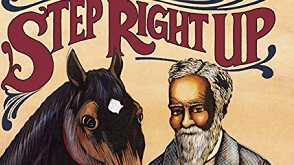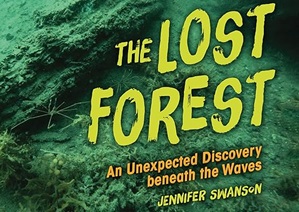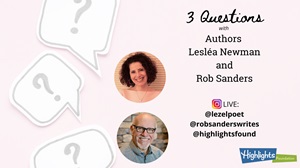We’d like to thank Donna Janell Bowman (donnajanellbowman.com) for this informative blog post! Donna was on the faculty for Writing Picture Book Biographies.
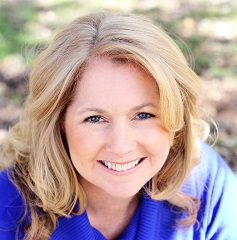 Donna is the author of many nonfiction books for young readers, including the multi-award-winning picture book biography Step Right Up: How Doc and Jim Key Taught the World About Kindness.
Donna is the author of many nonfiction books for young readers, including the multi-award-winning picture book biography Step Right Up: How Doc and Jim Key Taught the World About Kindness.
Tell Compelling True Stories That Read Like Fiction
The best narrative picture book biographies tell compelling true stories that read like fiction. When done well, they look effortless. In reality, crafting an irresistible 32-48-page picture book biography is like carving a giant Redwood tree down to an 8×10 picture frame. We often begin with the same research required of an adult biography so that we may understand our character on a three-dimensional level. It takes time to conceptualize and craft a meaningful narrative that captures the spirit of the character within that wee frame, er, picture book. The process can seem daunting. How do you carve, whittle, and shape relevant information into a focused narrative for kids?
10 Things to Consider
1. Mentor Texts
Are you reading picture book biographies regularly? Analyzing exceptional books is the best way to learn.
2. Intended Audience
Are you writing for 6-8-year-olds or 8-12-year-olds? Plan your content and storytelling decisions accordingly.
3. Focus or Angle
Rather than using a “cradle to grave” approach, narrative picture book biographies most often focus on an anecdote, episode, or specific angle of a person’s life. For example, Abraham Lincoln is a broad topic, but Lincoln’s forgotten duel, or his debates with Douglass, or how a young girl inspired Lincoln to grow a beard, are focused angles. What angle of your character’s life is your focus?
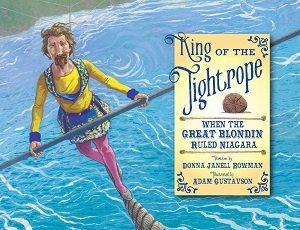 4. Narrative Arc
4. Narrative Arc
What events led to your character’s meaningful contribution? Though this is an over-simplified definition, a story usually involves a character who faces internal and/or external obstacles while in pursuit of their goal. Their journey–the active plot–is the narrative arc where stuff happens. For example, an encyclopedic entry might read: The Great Blondin performed on a tightrope over the Niagara River in 1859. That is fact. But crafting a beginning, middle, and end that includes historical context, character insight, and how Blondin overcame skeptics, dangers, and an obstacle-riddled process to achieve his goal, is a narrative arc.
5. Character Development and Arc
One of the biggest challenges to writing a picture book biography is encapsulating the character’s personality, quirks, inner drive and motivations, and what made them unique yet relatable to young readers. How can you help readers peek into your character’s thoughts and feelings through actions, direct quotes, monologue? By your story’s end, does your character change, or do her unique contributions change her world?
6. Theme
Theme is critical in picture book biographies. What is the universal belief(s) about life that your character’s journey reveals? Is it about the power of kindness, or that determination is the key to success, or that words matter, or that love conquers all, or that every person can make a difference, etc., etc.? Scenes should be threaded together with your intended theme.
7. Structure
How will you organize your story on the page? Is a linear (chronological) approach best for your subject and your intended reader, or would a non-linear structure with a mid-scene opening hook, followed by a flashback, be more effective? Or maybe verse stanzas are more appropriate? There’s no template, so experiment.
8. Point of View and Tense
One of the many ways picture book biographies differ from long-form biographies is in creative flexibility. Which point-of-view (POV) and tense are most effective for your story?
9. Voice
The goal of a narrative picture book biography is to tell a story, not a recitation of facts. It is helpful to think of yourself as a storyteller. What voice and tone are most appropriate for your subject and for your intended reader? Authoritative? Humorous? Poetic? Suspenseful? Romantic? Nostalgic? Don’t be afraid to play with rhetorical or poetic devices.
10. What are you waiting for?
Now that you’ve carefully considered your story’s component parts, it’s time to carve your own picture book biography.
 Donna Janell Bowman is the author of many nonfiction books for young readers, including the multi-award-winning picture book biography Step Right Up: How Doc and Jim Key Taught the World About Kindness, NCSS Notable Abraham Lincoln’s Dueling Words, and forthcoming King of the Tightrope: When The Great Blondin Ruled Niagara. Donna has an MFA in Writing from Vermont College of Fine Arts, where she focused her critical thesis on picture book biographies. She enjoys school visits, teaching writers, and working as a freelance writer, editor, and coach. She lives near Austin, Texas and is represented by the Erin Murphy Literary Agency.
Donna Janell Bowman is the author of many nonfiction books for young readers, including the multi-award-winning picture book biography Step Right Up: How Doc and Jim Key Taught the World About Kindness, NCSS Notable Abraham Lincoln’s Dueling Words, and forthcoming King of the Tightrope: When The Great Blondin Ruled Niagara. Donna has an MFA in Writing from Vermont College of Fine Arts, where she focused her critical thesis on picture book biographies. She enjoys school visits, teaching writers, and working as a freelance writer, editor, and coach. She lives near Austin, Texas and is represented by the Erin Murphy Literary Agency.

